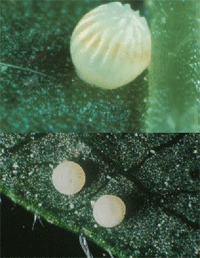Howdy,
First of all, I would like to mention that yall reccommending I invest in mud boots may not have been the most accurate suggestion. In truth, I think a kayak would have been more appropriate. The cotton in Jackson and Matagorda counties is blooming or close to blooming, and most of Wharton county is not far behind. I have seen a wide variety of square sets all over, ranging from a fairly low square set with several skips (not drops), to good fruit loads or fields with a fair amount of fruit drop. In what is still squaring, fleahoppers are still a concern. The action threshold is 15- 25 fleahoppers per 100 plant terminals checked. If you are looking for insecticide rates for fleahoppers, I included a chart for them in my article on May 27.
Bollworms and budworms are currently flying around cotton fields, and I have been seeing and hearing about eggs in cotton already. It is a little early, but we need to be on the lookout for these guys in cotton and sorghum. In cotton, the best way to look for bollworms is by checking terminals and upper leaves and bracts for larvae and eggs. The eggs are pale and ridged, and will darken as they get closer to hatching. Check 25 plants per stop, and make at least 4 stops in a field, depending on the size of the field. Another method for checking is to look at the entire plant. In each stop, pick five places and check three consecutive plants. Check each square, bloom and boll on these plants, paying close attention to the bloom tags as well as the rest of the plant. Make at least 4 stops per field using the whole plant method as well. In Bt cotton, the threshold to spray for bollworm is 5,000 worms/ acre with more than 5% damaged bolls after using the full plant inspection method.
 |
| Bollworm egg (top) Looper eggs (bottom) |
 |
| Bollworm larva on boll (H. zea) |
 |
| Bollworm moth (H. zea) Bollworm photos and charts from http://cottonbugs.tamu.edu  |
There have been a few stink bugs in cotton recently as well. Stink bug feeding can cause boll drop, and can cause carpal warts on the inside of bolls, or lead to secondary infections in bolls.
The charts below have the thresholds and recommended insecticides for stink bugs in cotton.
 |
| From top to bottom, adult brown, southern green, green and conchuela stink bugs |
 |
| Carpal warts in a cotton boll |
 |
| Southern Green Stink bug Nymphs Stink bug photos and charts from cottonbugs.tamu.edu |

Most of the sorghum I have looked at recently is past bloom and in soft dough or farther along. We are still watching sugarcane aphid and yellow sugarcane aphid numbers. Some fields in our counties have been treated, but our numbers have not been as high as the reports I have been hearing from farther south of us.
If yellow sugarcane aphids are only on the bottom leaves, there is no need to treat yet. If they begin moving into the upper canopy, then it is time to consider treatment options, as 5-6 aphids feeding can kill a leaf.
Sugarcane aphids, the ones with the "black tailpipes", should be checked for once a week, until they are found on lower or mid canopy leaves, then they should be checked twice weekly. If the infestation gets higher than 50-125 aphids or more per leaf, treatment should be made within 4 days, and evaluated again in 3-4 days. Additional information and pictures of the aphids and quick check guide can be found at:
http://agrilife.org/coastalbend/program-areas/entomology/sugarcane-aphid-on-sorghum/
and
http://agrilifeextension.tamu.edu/wp-content/uploads/2016/03/sugarcane-aphid-guide-images.pdf
 |
| Photo: Kate Harrell |
 |
| Rice Stinkbug on Wheat Photo: Kate Harrell |
Sorghum midge causes damage by laying eggs in the developing sorghum seeds during bloom. Sample for them with a beat bucket, and follow this link for the sorghum midge threshold calculator: http://bug.tamu.edu/apps/sorghummidgecalculator/index.php
You will want to use a beat bucket to sample for headworms as well. Follow this link for the sorghum headworm threshold calculator: http://bug.tamu.edu/apps/sorghumheadwormcalculator/index.php
If you have any questions and please don't hesitate to come by the office or give me a call. Stay dry and out of the mosquitos everyone!
Kate



No comments:
Post a Comment